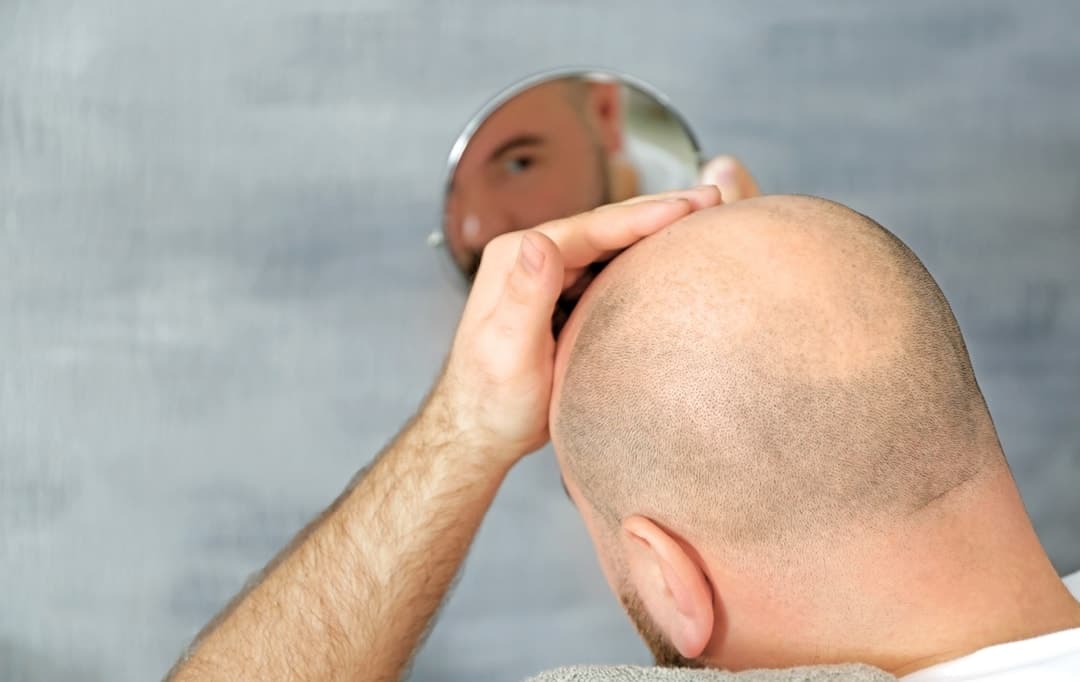In the early stages of hair loss, nonsurgical hair loss treatments are an excellent option. Minoxidil is an FDA-approved over-the-counter solution or foam that has been shown to help with hair loss. Minoxidil can be used by both men and women over the age of 18. This solution is only recommended for those in the early stages of their hair loss as it works by stimulating active hair follicles to produce healthier, stronger hair strands. Now that we’ve covered the basics, let’s go over the biggest questions people have about minoxidil.
What Is Minoxidil?
So first things first, what is minoxidil? Minoxidil is a topical medication used to treat hereditary hair loss. Many people may recognize the popular brand names Rogaine or Theroxidil, which are actually minoxidil. This hair loss treatment comes in either a foam or solution that is applied directly to the scalp. Minoxidil for thinning hair comes in 2% or 5% strengths, and some patients have reported skin irritation as a side effect, especially at the higher strength. However, this could also be from using too much solution, so it is best to only use the recommended amount.
While a prescription isn’t necessary, we strongly recommend consulting with a hair loss specialist before using minoxidil. You will need to continually use minoxidil for it to work, so it is best to speak with a doctor before starting a long-term treatment like this one.
How Does Minoxidil Work?
Now that we know what minoxidil is, let’s talk about how it works. First off, it should be said that no one knows exactly why minoxidil is an effective hair loss treatment. However, what we do know is that this type of drug is a vasodilator, which means it dilates blood vessels to allow blood to flow more easily through them. So it is believed that minoxidil works by allowing blood vessels to increase the oxygen and nutrients that go to your hair follicles thanks to the dilation. All this ends up stimulating the hair follicles, resulting in hair growth. This is also why minoxidil does not work on bald spots, as it needs an active hair follicle to stimulate. Minoxidil is also believed to extend the growth phase (known as the anagen phase) and may also enlarge the follicles that have shrunk due to hormonal changes.
Will Minoxidil Thicken My Hair?
In short, yes. Minoxidil thickens hair by producing stronger, healthier strands and, as mentioned above, by enlarging follicles that have shrunk. Many people will notice an increase in the density and thickness of their strands as well.
When you first start using minoxidil, you may experience increased hair loss. This may happen because the drug affects the hair growth cycle and encourages follicles in the final phase of their cycle (known as the telogen phase) to fall out so they can be replaced. After a few months, your hair follicles should begin to settle and the real results will start to become more noticeable.
Does Minoxidil Cause Hair Loss if I Stop Using It?
Minoxidil does not cause hair loss; however, once you stop using it, it stops working. Some have reported that their rate of hair loss was increased after they stopped using minoxidil. This is partly why we encourage you to consult with a hair loss specialist before using minoxidil, since it will need to be used for a long time.
Side Effects of Minoxidil
The most common side effect associated with minoxidil is scalp and/or skin irritation. This is especially common with the stronger 5% formulation. Using an excess of minoxidil can worsen side effects, so only use the prescribed amount. Other side effects as reported by the Mayo Clinic include rapid weight gain; swelling of the face, hands, feet and lower legs; headaches; and dizziness. If you notice these side effects and they do not subside within a few days, consult with your doctor right away.
How to Begin Minoxidil Treatment
If you’ve considered minoxidil for your thinning hair, start by consulting with a hair loss specialist. This medication is proven to help those starting to lose their hair when used correctly and habitually. Before starting this treatment, you will also need to consider any relevant allergies or drug interactions. Overall, if minoxidil is right for you, then using it could be a great step in bringing back a lustrous head of hair!
